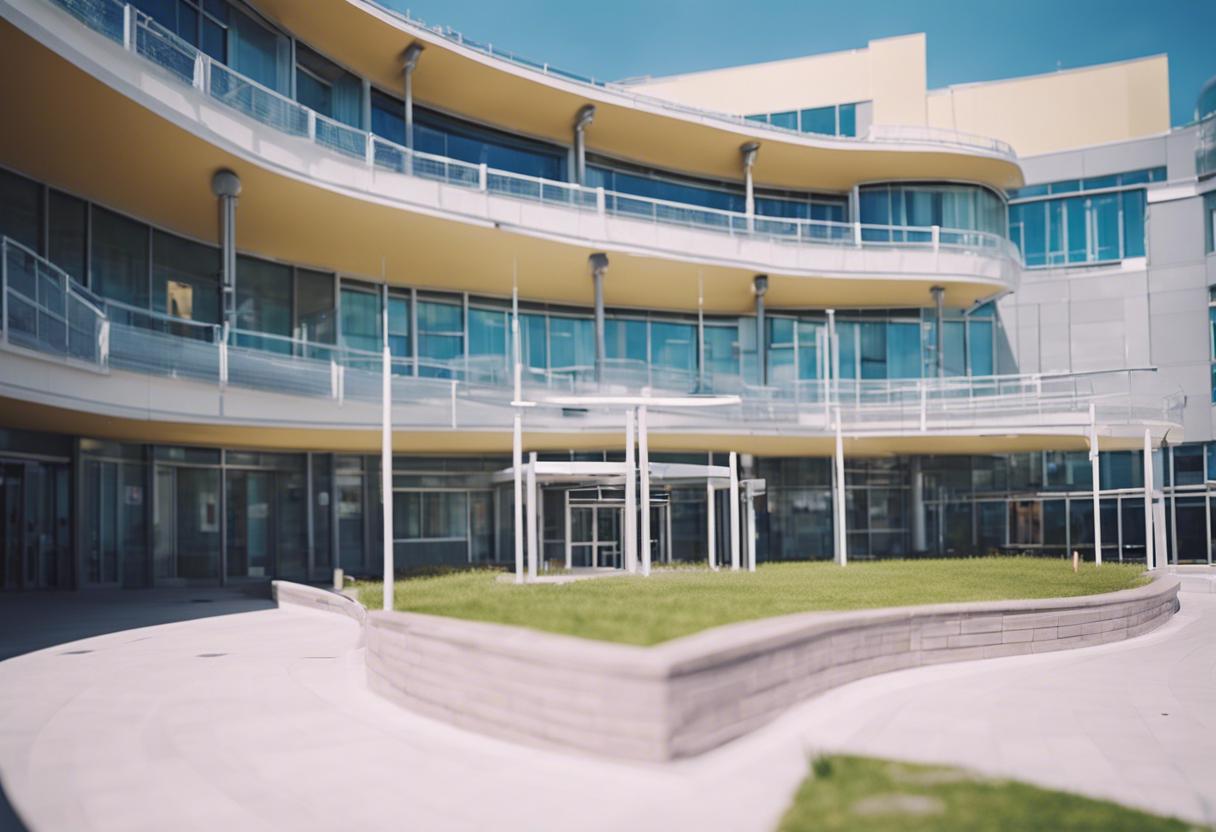The National Paediatric Hospital Development Board (NPHDB), the administrative body overseeing the establishment of the national children’s hospital, plans to take legal action against construction company BAM. This legal action is given rise due to delays in the completion of the project, which could cost the board over €20 million.
This situation is the latest in a series of disputes related to the building of the new national children’s hospital, a project plagued by recurring setbacks and escalating costs.
The current scenario arose following a correspondence from Health Minister Stephen Donnelly to Taoiseach Simon Harris, Tánaiste Micheál Martin, and Green Party head Roderic O’Gorman. The Minister’s letter expressed fears that the finalisation date for the hospital might be further delayed from the initially anticipated completion date of February 2025. The expected lag could render the possibility of the hospital commencing operations in the upcoming year doubtful as the hospital building will require additional fit-out time.
Contrary to the beliefs expressed in the Health Minister’s letter, BAM has contested some of the allegations and described them as unhelpful towards the swift execution of this complex and crucial project.
The cost of the hospital escalated by over €500 million earlier this year, pushing the total projected expenditure, including shifting services to the new building, to €2.2 billion. The delays and cost surge has led the involved parties to increasingly point fingers at each other.
The NPHDB states that BAM has altered the estimated completion date for the new children’s hospital 14 times since it started the above-ground operations in early 2019. The NPHDB is committed to pressuring BAM to complete its assignments and ensure it fulfills its contractual obligations.
The decision was taken to withhold 15% of verified payments from the construction firm, BAM, for a second time, with the warning of a potential imposition of Liquidated Damages due to delayed completion, according to a statement. Liquidated damages are a precise legal specification in construction contracts, stipulating an agreed payment due in instances of contractual breach.
NPHDB’s Chief Executive, David Gunning, reported to the Public Accounts Committee (PAC) in May that damages could potentially exceed €21 million. The exact figure is yet to be determined by NPHDB, stating it largely depended on BAM’s progress on a monthly basis.
The statement attributed the project’s delays to BAM’s persistence in marking rooms and hospital areas as completed when they remained unfinished, BAM’s failure to appropriately supervise project execution, and a lack of adequate project resourcing. It was also highlighted that the company has failed to provide an acceptable Baseline Programme since February 2021, a compulsory timeline under the construction agreement. The absence of such is described as “highly irregular” and “wholly unacceptable for an undertaking of national significance like the new children’s hospital.”
However, BAM rejected these accusations, stating it was not liable for the whole €2.2 billion hospital cost, pointing out that its work contributes to slightly over half of the entire capital expenditure on this project, including potential dispute resolution awards. Responding to NPHDB’s claims of incomplete rooms, BAM expressed full confidence in the construction quality of the world-class hospital, describing room handovers and minor issue rectification as part of everyday procedures.
Financial and time burdens caused by “late, extensive changes to the reflected ceiling plans” were also indicated by the company, causing BAM to remove and reinstall over 2,200 ceiling fixtures, including smoke detectors and sprinkler heads.
The NPHDB’s explanation for project delays has been challenged by BAM, who claim that regular and significant design changes from the client are the main drivers of the extended deadline and additional costs. BAM maintains that an autonomous conciliator, after awarding the firm an additional €107 million, identified these frequent modifications as the predominant cause for the project’s cost overruns and delays. Moreover, the conciliator extended the project’s official completion date by over a year, indicating the volume of changes requested by the client.
However, the NPHDB disagrees, stating that BAM has not received €107 million as the figure is bonded and was merely suggested by the Standing Conciliator during the dispute resolution phase. It will present its case in court in order to minimise negative repercussions. Following the issue being brought to the High Court, the conciliation process has ended with the conciliator’s recommendations no longer standing and their conclusions not considered by the High Court as they resolve the conflicts.
BAM highlighted that the NPHDB reported to the Public Accounts Committee that it had issued 23,283 updated design drawings to them post the initial technical submission. BAM’s representative emphasised that the implications of these changes on cost and timeframe was evident in the conciliator’s ruling.
BAM asserts that it has at all times observed the contract’s terms and conditions and has not been reprimanded by the NPHDB, a contention disputed by the NPHDB. The focus for BAM now is completing the hospital, which is 93% ready according to the original remit, despite the extra work required due to the numerous design modifications.
The NPHDB will provide a comprehensive update to the Joint Oireachtas Committee on Health on 25th September.

